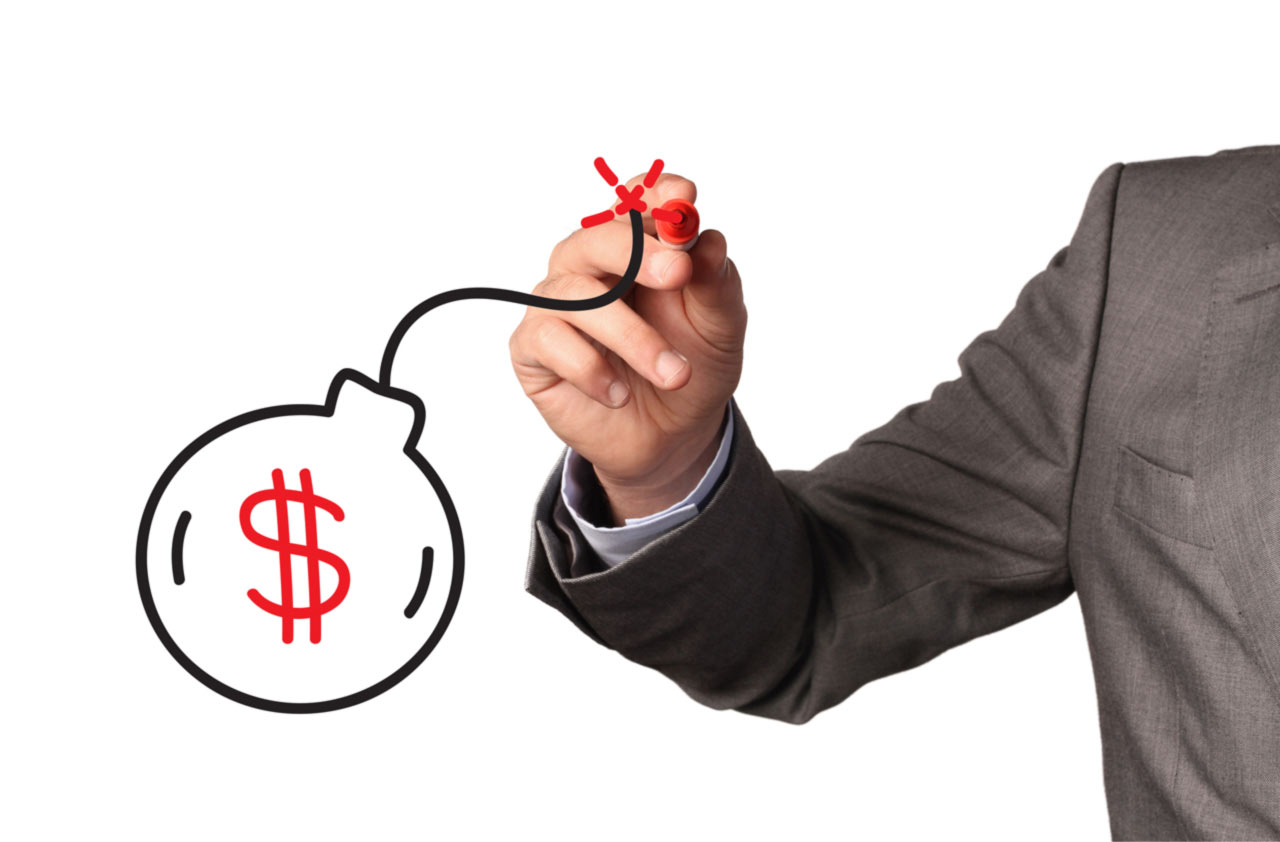Now Is the Time to Fend Off Problems With Your 401(k)-Focused Nest Egg
Tick, tick, tick. That's the tax time bomb on your 401(k) and IRA, quietly counting down. Here's how to defuse this explosive situation.


If you work for a company that still offers a pension, you’ve probably been told many times how lucky you are.
If you don’t and instead have a 401(k) or 403(b) through your employer, you may have realized by now that you may need to create your own luck. It’s up to you to help grow that money and then make it last through your retirement, and that’s no easy concept.
That wasn’t quite so obvious back in the early 1980s, when defined-contribution plans first came on the scene, and then later, when they began replacing defined-benefit plans.

Sign up for Kiplinger’s Free E-Newsletters
Profit and prosper with the best of expert advice on investing, taxes, retirement, personal finance and more - straight to your e-mail.
Profit and prosper with the best of expert advice - straight to your e-mail.
An Early Love Affair with 401(k)s
Though most workers would have preferred to keep their pension while adding a 401(k) as a separate perk — as some companies still do — the idea of having control over one’s own assets, with the potential to amass more wealth, has always been appealing. Plus, there was the enticement of the employer match, often touted as “free money.”
Workers were encouraged to start contributing to their 401(k)s as early as possible and to contribute as much as they could, and many did. It was easy, thanks to payroll deductions, and people liked that they didn’t have to pay taxes on that income — especially if they were high earners in a high tax bracket.
A Looming Tax Issue Later
But people seemed to forget they will owe some of that money to the IRS. They just keep letting those tax-deferred accounts grow, ignoring the fact that someday they’ll have to pay taxes on their contributions and earnings.
Those who do think about the tax aspects mostly assume that when they retire, they’ll have fewer expenses and less need for income, thus a lower tax rate than when they worked. That’s the conventional wisdom.
It hasn’t quite worked out that way, though. Unlike their parents and grandparents, who thought of retirement as a time to wind down and spend less, the Baby Boomers retiring now have no intention of slowing down. They don’t want to downsize their lifestyle; they want to add to it with travel, hobbies, concerts, dinners out, boats and vacation homes.
Which means that when they retire, many Baby Boomers need the same income or more, not less, and they end up in the same tax bracket or a higher one.
Worried About the Wrong Thing
I meet 401(k) investors who are worried about asset allocation and portfolio diversification every time the market goes up or down. What they don’t seem to consider when they look at their monthly statements is asset location and tax diversification.
Instead of separating their money into three tax buckets — one that’s taxed-deferred (IRAs, 401(k)s, 403(b)s), one that’s taxable (brokerage and bank accounts) and one that’s tax-free (Roth accounts and indexed universal life insurance) — they tend to keep almost all their wealth in the tax-deferred bucket. As a result, taxes are quietly eating away at their hard-earned nest egg.
And now, as the oldest Boomers are getting into their 70s, they’re also finding out about the impact that required minimum distributions (RMDs) can have. They feel as though they’ve been put in tax handcuffs — forced to withdraw and pay taxes on money they might not even need.
We’re actually starting to see people in their 70s who are paying more in taxes than when they were in their 60s. And they aren’t happy about it. This savings tool that was supposed to help workers build a better retirement could potentially jeopardize their lifestyle if they haven’t put a tax plan in place.
Take a Pre-Emptive Strike Now to Solve the Problem
There is a way to unwind the problem, however, and as with so many aspects of retirement planning, it’s all about timing.
Once you hit age 59½ and can access those funds without a penalty, it can make sense for 401(k)-focused savers to start shifting tax-deferred money to the tax-free bucket by converting some of it to a Roth IRA and/or indexed universal life insurance.
There’s no time like the present to get it done. Here’s why:
- If you retire entirely on taxable and tax-deferred income, you’ll be subject to the changes of the government. Many of the reforms passed in 2017 will sunset in 2025. It’s likely the government will raise tax rates at that point — if not sooner, if there’s a change in the administration.
- You also might lose some tax deductions in the future. We lost several deductions with the 2017 reform, and that could happen again. Most people also lose deductions as they age: when they pay off their home, their kids grow up and move out, or when one spouse dies.
- The government might tax more things. It’s pretty clear that there’s going to have to be some kind of Social Security reform in the future, and one answer could be to raise taxes.
I often ask the people I see, “In your heart of hearts, do you think taxes will be higher or lower 15 to 20 years from now?” Everybody says higher.
If that’s your expectation, why would you want all that money and growth in your tax-deferred bucket? Why wouldn’t you look at doing some tax planning now?
The Bottom Line for Your Plan
Even if you’re younger than 59½, you can do something to keep from paying more later. I encourage everyone to contribute to the employer match on their 401(k), but to also take advantage of today’s lower tax rates with a Roth IRA or Roth 401(k). You’ll pay taxes on your money on the front end, but once it’s in your account, the money will grow tax-sheltered. Then at retirement, qualified withdrawals will come out tax-free.
I come from Wisconsin, and there are lots of farms up there, so I’ll go with the old analogy that it’s usually smarter to pay taxes on the seed than the harvest.
If you’ve been carefully tending the money in your 401(k), you’ve likely watched it grow over the years. Don’t let it get away from you in retirement. Keep making your own luck and keep taxes in mind as you move forward.
Investment advisory services offered only by duly registered individuals through AE Wealth Management, LLC (AEWM). AEWM and Heise Advisory Group are not affiliated companies. Neither the firm nor its agents or representatives may give tax advice. Individuals should consult with a qualified professional for guidance before making any purchasing decisions. Heise Advisory Group is not affiliated with the U.S. government or any governmental agency. 614438
Kim Franke-Folstad contributed to this article.
Disclaimer
The appearances in Kiplinger were obtained through a PR program. The columnist received assistance from a public relations firm in preparing this piece for submission to Kiplinger.com. Kiplinger was not compensated in any way.
Get Kiplinger Today newsletter — free
Profit and prosper with the best of Kiplinger's advice on investing, taxes, retirement, personal finance and much more. Delivered daily. Enter your email in the box and click Sign Me Up.

Ken Heise is co-founder and president of the St. Louis-based Heise Advisory Group (www.heiseadvisorygroup.com). He is an Investment Adviser Representative and a Registered Financial Consultant, a designation awarded by the International Association of Registered Financial Consultants to advisers who meet high standards of education, experience and integrity.
-
 Stock Market Today: Stocks Soar on China Trade Talk Hopes
Stock Market Today: Stocks Soar on China Trade Talk HopesTreasury Secretary Bessent said current U.S.-China trade relations are unsustainable and signaled hopes for negotiations.
By Karee Venema
-
 2026 Disney Dining Plan Returns: Free Dining for Kids & Resort Benefits
2026 Disney Dining Plan Returns: Free Dining for Kids & Resort BenefitsPlan your 2026 Walt Disney World vacation now. Learn about the returning Disney Dining Plan, how kids aged three to nine eat free, and the exclusive benefits of staying at a Disney Resort hotel.
By Carla Ayers
-
 Financial Steps After a Loved One's Alzheimer's Diagnosis
Financial Steps After a Loved One's Alzheimer's DiagnosisIt's important to move fast on legal safeguards, estate planning and more while your loved one still has the capacity to make decisions.
By Thomas C. West, CLU®, ChFC®, AIF®
-
 Two Don'ts and Four Dos During Trump's Trade War
Two Don'ts and Four Dos During Trump's Trade WarThe financial rules have changed now that tariffs have disrupted the markets and created economic uncertainty. What can you do? (And what shouldn't you do?)
By Maggie Kulyk, CRPC®, CSRIC™
-
 I'm Single, With No Kids: Why Do I Need an Estate Plan?
I'm Single, With No Kids: Why Do I Need an Estate Plan?Unless you have a plan in place, guess who might be making all the decisions about your prized possessions, or even your health care: a court.
By Cynthia Pruemm, Investment Adviser Representative
-
 Most Investors Aren't as Diversified as They Think: Are You?
Most Investors Aren't as Diversified as They Think: Are You?You could be facing a surprisingly dangerous amount of concentration risk without realizing it. Fixing that problem starts with knowing exactly what you own.
By Scott Noble, CPA/PFS
-
 Will My Children Inherit Too Much?
Will My Children Inherit Too Much?If you worry about how your children will handle an inheritance, you're not alone. Luckily, you have options — from lifetime gifting to trusts — that can help.
By Mallon FitzPatrick, CFP®, AEP®, CLU®
-
 Charitable Giving Lessons From Netflix's 'Apple Cider Vinegar'
Charitable Giving Lessons From Netflix's 'Apple Cider Vinegar'Charity fraud is rife, and a Netflix series provides a timely warning about donating money to a good cause without looking into its background.
By Peter J. Klein, CFA®, CAP®, CSRIC®, CRPS®
-
 Four Takeaways From Filing Your Taxes to Boost Your Financial Future
Four Takeaways From Filing Your Taxes to Boost Your Financial FutureNow that another tax season is in the rearview mirror for most of us, what lessons can you take from what you learned about your finances to plan for the future?
By Kate Winget
-
 First 100 Days: Trump's Impact on Your Finances
First 100 Days: Trump's Impact on Your FinancesHere are some opportunities to consider regarding investing, interest rates and tax cuts as the financial landscape shifts under the new administration.
By Daniel Razvi, Esquire